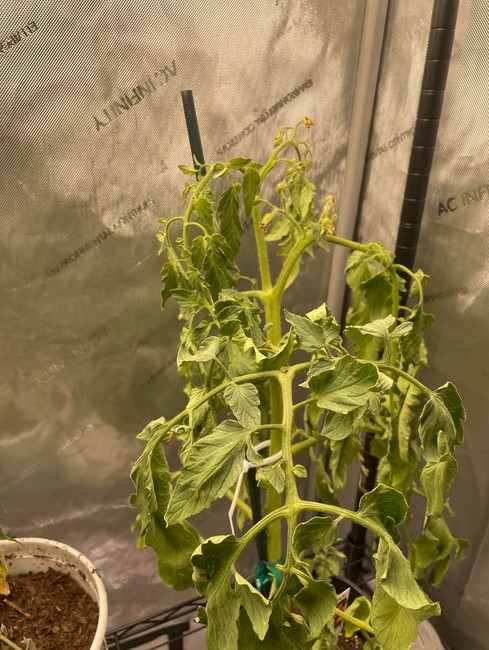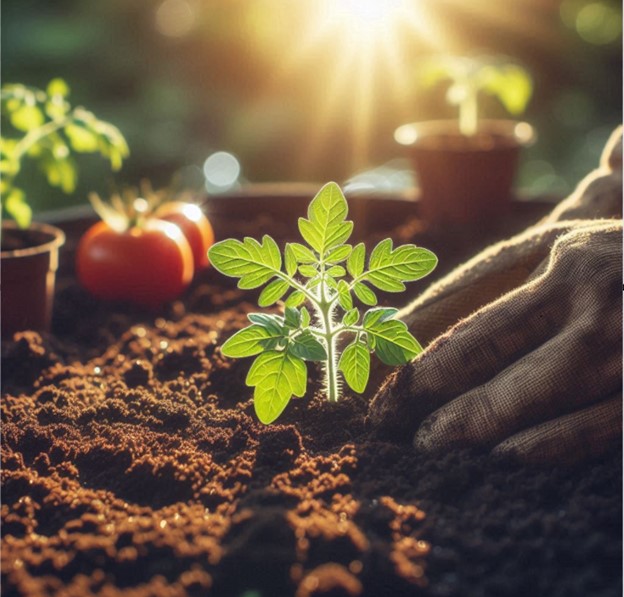Even though tomato plants have a deep love for sunshine they are finicky about hydration.
This essential guide will equip you with the knowledge of tomato plants’ water requirements, enabling you to foster optimal growth and productivity without the risk of over or under-watering.
By understanding and implementing the optimal watering practices, you play a crucial role in promoting robust growth and abundant harvests. This includes knowing when and how often to water your tomato plants, a responsibility that ensures they receive the basic amount of hydration required to thrive.
Best Way To Water Tomato Plants
Table of Contents
There are various methods of watering the tomato plants and here are the things that you can use to water the plants:
- Watering can
- Hose
- Drip irrigation
- Sprinkler
Tomato Watering Strategies At Each Stage
Now, let’s delve into the specific water requirements at each growth stage of tomato plants, providing you with a comprehensive understanding of when and how often to water your plants.
Tomato Seedlings
The seedlings need enough water to grow successfully so ensure the soil is damp below the surface so that the roots can spread and establish themselves easily.
Young Transplants

After transplanting the young tomatoes in the garden allow them to soak well. Monitor the soil moisture and prevent them from drying out.
Mature Tomatoes
In hot and humid conditions, to grow tomatoes water the plants more often, and during the rains reduce the watering or skip in case of heavy downpours.
Fruiting Plants
Keep a close watch for under-watering and over-watering as in both cases the harvest will be hindered. Ensure you water your tomato plants just enough without excess.
What Is The Maximum Amount Of Water Required By Tomato Plants?

The guidelines discussed below will help in providing a general overview of the water requirements for tomato plants:
General Watering Requirements
- Tomato plants require consistent soil moisture and fluctuations that result in blossom end rot and fruit cracking. Knowing when it’s time to water your tomatoes is crucial.
- The weekly water needs of the tomato plants are around 2.5-5cm or 1-2 inches of water during the peak growing season
- In hot and dry conditions, the water needs to rise to about 0.5-1 gallon of water per plant per daily
- The tomato plants need to be watered twice a day during the hottest time and it can be reduced to once as the weather cools
- Aim to moisturize the soil at a depth of around 8 inches or 20cm and avoid watering on the top
- Make use of organic mulch to help retain the soil moisture and reduce evaporation, making it less frequent to water your tomato plants.
- Monitor the soil moisture and adjust the watering needs depending on the weather conditions and plant growth
Maximum Watering Requirements
- In hot and dry weather conditions tomato plants need up to 2 inches or 5 cm of water weekly and this is required to compensate for the rapid evaporation that takes place when the temperatures soar
- Splitting the watering application into a daily schedule will require 1-1.5 gallons of water per plant per day
- Water deeply and slowly at the base of the plant to encourage deep root growth
- Using thick organic mulch will reduce the need for frequent watering
- In the case of container-grown tomatoes, they require frequent watering twice a day during extreme heat
Note: Be observant of the weather to determine when it’s time to water your tomato plants. Adjusting the watering frequency depending on weather conditions and growth will ensure the tomato plants receive consistent moisture for thriving even in the hottest and driest weather. You often need to water your tomato plants more frequently during hot, dry spells.
What Are The Factors That Influence The Watering Of Tomatoes?

There are several factors based on which the water required by tomato plants varies and those are:
- Weather Conditions
- Plant Size
- Growth Stage
- Soil Type
- Sun Exposure
- Mulching
Signs Of Over-Watering
Here are a few tell-tale signs of overwatering a tomato plant. Go through those and take the necessary corrective measures to ensure that the plants receive the maximum amount of water for yielding the maximum amount of production.
- Wilting leaves
- Yellow leaves
- Curling leaves
- Blisters or bumps on the leaves
- Cracked fruit
- Foul odors
- Dark and mushy roots
- Moldy or soggy soil
- Consistently moist soil
Signs Of Under-Watering

Knowing when to water is important and so the signs of under-watering are discussed below.
Doing this will help you to take corrective action to ensure that the tomato plants receive the right amount of water:
- Leaf drop
- Wilted leaves
- Stunted growth
- Fruit drop
- Dry soil
- Steam weakness
- Fungal growth
Best Practices To Grow Healthy Tomatoes

- Practice frequent and deep watering techniques, adjusting how often to water based on the plant’s needs and weather.
- Water the base of the plants and not the leaves
- Monitor the soil moisture regularly
- Watering in the early hours of the morning is advisable
- Using mulch around the tomato plants will help in retaining moisture in the soil
Taking care of tomato plants is of utmost importance if you’re looking forward to a successful harvest.
Wrapping Up
The key to mastering the technique of watering the tomato plants lies in monitoring and adjusting the watering schedules as per the weather.
With a little bit of practice and some handy tips, you’ll soon become a pro at watering the tomatoes.
Leave a Reply